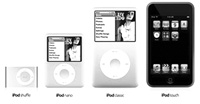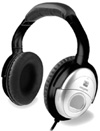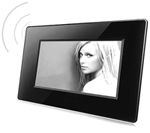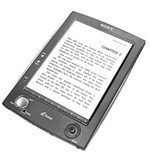Getting Personal
From iPods to eBooks, Everyday Life is Getting a Technological Shot in the Arm
The summer of the iPhone is all but behind us, but there is more new technology making headlines these days. Myriad new products, from gadgets to professional software to phones and cameras are coming onto the market.
There are trends — everything keeps getting smaller and more versatile — but the bottom line is an emphasis on communication, organization, and simplifying the everyday tasks involving life and work with some style.
In this issue, BusinessWest offers a sampling of what’s new in technology and what the products hitting the market bring to the table.
Ansering the Call
 Left to right, iPod Shuffle, iPod Nano, iPod Classic, and iPod Touch |
The sleek, touch-screen iPhone is still making news; on Sept. 9, Apple sold its one millionth unit (after reducing its price by about $200). In response to the many iPhone owners upset with the decision to reduce the price from $599 to $399 two months after its debut, Apple CEO Steve Jobs sent an open letter — directly to the phones, of course — awarding all current iPhone users a $100 store credit toward the purchase of any Apple product.
That’s good news for fans of ‘the people’s company,’ since Apple is following up on the success of the iPhone with the sixth generation of the iPod, and the two devices closely resemble each other.
The iPod Touch was formally introduced to the public this month, and boasts many of the same features as the much anticipated iPhone. It includes a touch screen and Wi-Fi capabilities, a Safari Web browser, and connects directly to YouTube, where users can view millions of free videos. The Touch is available in eight- and 16-gigabyte models, now retailing for $299 and $399, and joins the existing suite of iPods — the Shuffle, Nano, and Classic models;apple.com.
Now Hear This
 Aurvana Headphones |
Apple may be the big newsmaker in the technology race, but many other companies are in the running, vying for the attention and the loyalty of increasingly in-the-know shoppers.
Another audio giant in the marketplace, Creative Labs, which manufactures the Zen series of mp3 players and accessories, has recently devised high-end, noise-canceling headphones called Aurvana, designed to augment the mp3 listening experience.
The headsets use the latest audio technology, X-Fi, or extreme fidelity, as it’s called, to improve the sound quality of an mp3 file; it does this by restoring the details of a file that are lost during compression. Aurvana headphones also feature three switches to optimize listening experiences for not only music files, but while watching television, movies, or playing games as well. The first is a noise-canceling switch, the second a ‘crystalizer’ that enhances mp3 playback, and the third is a CMSS-3D switch that creates a surround-sound effect.
The headsets are expected to be available later this month, retailing for approximately $300;creative.com.
A Picture and Thousands of Words
Just as CDs and stereos are becoming increasingly passé, paperback books, day planners, and photo albums are also gradually becoming things of the past, replaced by more effective and less expensive digital versions of each.
Photophiles in particular can now take more advantage of the digital photo frame craze than ever before, as frames are being designed with more capabilities, better performance, and more memory.
 eStarling 2.0 Wi-Fi Photo Frame |
The eStarling 2.0 Wi-Fi Photo Frame, for instance, takes the concept of displaying digital photos to the next level, by adding the ability to connect to the Internet wirelessly.
The seven-inch frame will display photos in a slideshow format, and can accommodate most types of camera memory cards, immediately adding any photos on the card directly into the rotation.
However, JPEG photos can also be sent directly to the eStarling via E-mail or through an RSS photo feed, such as those available through the popular photo-sharing Web site Flickr.
This allows frame owners to have photos E-mailed to them by friends or relatives, send photos to the frame via a laptop or mobile phone from virtually anywhere in the world, and also search for specific photos taken by others and posted on public sites online.
Within the Flickr community, these photos can be added to the eStarling by entering ‘tags,’ or keywords, and having them fed directly to the eStarling. The criteria could be as simple as photos of Hawaii, or as detailed as ‘red 1957 Chevys.’
Despite these new attributes, the frame is relatively simple to use. It requires a one-time setup (connecting the frame to a computer by a USB cord), and eStarling software guides the process of creating a free E-mail address to which photos can be sent. Spam blockers are also provided, and the frames retail for approximately $220;estarling.com.
 |
Also striving to improve the leisure side of life is Sony’s PRS500 Portable Reader System, released this month. The tablet offers a space-saving solution for readers on the go in addition to employing the newest technology to alleviate eye-strain and make digital reading a more comfortable experience overall.
Using E Ink Display technology, the screen mimics the look of a paper book, but text can be magnified up to 200%. It also weighs just under nine ounces and is a half-inch thick, with a memory card slot through which books, photos, and mp3s can be uploaded.
E-books can be found online, often for free, and Sony has instituted its own virtual bookstore, the Sony Connect eBookstore. The PRS500 is currently retailing for about $275, and perhaps signals the beginning of the end for traditional, bound volumes. It’s an intriguing shift, but also one that could significantly reduce the world’s paper consumption;sonystyle.com.
The Technology of Ecology
Other products now being introduced also take the environment and energy conservation into account, in addition to technological quality, in this increasingly hooked-in world.
Dataprobe, a leading manufacturer of technology solutions for networking systems, announced last month that its iBoot product, a remote power solution that monitors, manages, and controls both corporate and personal computing devices and electronics, is now compliant with RoHS (restriction of the use of hazardous substances) and WEEE (Waste of Electrical and Electronic Equipment) standards in Europe.
The RoHS and WEEE directives, respectively, ban the sale and import of electronic equipment containing more than approved levels of lead, cadmium, mercury, and other elements, as well as reduce the exposure of hazardous chemicals within recycled materials.
Manufacturers in the U.S., such as Dataprobe, must meet the requirements of both in order to import their products for sale in the European Union market.
Changes to the iBoot to address the EU’s new guidelines augment its already environmentally friendly function. With a single-outlet power switch, the iBoot allows for power control over various types of equipment from anywhere, using an Internet browser. This, in turn, reduces or eliminates the need for on-site technical support, at a cost of about $275;dataprobe.com.
For those hoping to bring a little bit of alternative energy directly into the home, Tamiya Inc. has created a good starting point: the Loopwing Wind Power Generator Set, which catches a breeze and converts it to electricity.
It’s more of an educational tool than anything else, using the energy it generates to power a small rechargeable toy car, which will run for about one to two minutes for every five to 10 minutes of wind-powered charging;tamiya.com
However, the $50 Loopwing is an example of how green energy is being scaled down for more accessible use by consumers. Another product doing the same has been devised by Italian designers Alberto Medo and Francisco Gomez Paz; the duo has created the Solar Bottle, a portable water-purifying system that uses SODIS technology — Solar Water Disinfection.
Each square, stackable, four-liter bottle has one transparent side to collect UV-A rays, which, coupled with increased temperature from solar sources, effectively kill disease-causing pathogens.
A handle makes for easy carrying, and also serves as a stand while being exposed to sunlight. It’s appropriately sized for both private homes and businesses, as well as for outdoor situations such as camping or boating.
The unique design and concept behind the Solar Bottle, which is still in development, also earned Medo and Gomez Paz a 2007 INDEX Award, and could be positioned as a solution for regions of the world with poor-quality drinking water supplies. For more information on the Solar Bottle, visitinhabitat.com.
From Roomba to RoboCop?
The Solar Bottle may still be in prototype mode, but its creation is part of a larger movement of technological marvels that continue to pour into our lives at break-neck speed. According to PCWorld magazine, some of the future technology that researchers and retailers alike are keeping a close eye on are in the areas of biometric security (handprint, fingerprint, and eye-scan access among them), and artificial intelligence.
True to that trend, iRobot (irobot.com) of Burlington, Mass., the firm that gave us the Roomba robot vacuum, has just debuted a tiny “robot cop,” which carries a camera and an electroshock weapon for use by law enforcement and military personnel.
With those kinds of leaps becoming commonplace, the Jetsons’ automated amenities of ready-made meals and flying cars do not seem quite so far off. Still, it’s to be hoped that a Taser-equipped iPhone is light years away.
Jaclyn Stevenson can be reached at[email protected]





